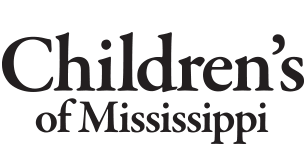Children’s Plastic and Reconstructive Surgery
- Children’s Plastic and Reconstructive Surgery Home
- Children's Craniofacial Services
-
Conditions and Treatments
- Conditions We Treat
-
More Information
- Ear deformities: microtia, anotia and constricted ear
- Cleft Lip and Palate
- Congenital nevus
- Craniosynostosis
- Dermoid cyst
- Nose deformities, nasal breathing problems
- Orbital hypertelorism
- Pierre Robin Sequence/Syndrome
- Positional Plagiocephaly: Flat Head Syndrome
- Prominent ears
- Velopharyngeal dysfunction
- Frequently Asked Questions
- Meet Our Team
- Patient/Family Resources
- Visit Preparation
Main Content
Frequently Asked Questions
About cleft lip/cleft palate
- Can I breastfeed my baby with a cleft lip or cleft palate?
- How can my baby with a cleft lip and palate feed?
- As my baby grows, what keeps the cleft lip from getting wider?
- Depending on the type of cleft, there are several options your surgeon will discuss with you.
- -Lip taping (DynaCleft®) is a less invasive, non-surgical option that involves taping the two sides of the lip together to prevent expansion. We teach families to do this at home.
- -A nasoalveolar molding (NAM) appliance is another non-surgical option. It is a custom-made device applied to the baby's mouth to prevent expansion. A NAM is not tolerated by some babies and is sometimes difficult for families as it requires weekly trips for adjustment.
- -A lip adhesion is a surgical option that is commonly used for wide clefts when families aren't comfortable with the other two options. In a lip adhesion procedure, the plastic surgeon stitches the sides of the lip together until the formal repair can be done.
- Is it normal for food or liquid to come out of my baby's nose?
- Is there anything special I need to bring to the hospital when my baby has surgery?
- How long do I need to keep the arm splints on?
- What kinds of foods can my baby eat after surgery?
- Can my baby have a pacifier after surgery?
About craniofacial conditions
- My baby is being referred for an abnormal head shape? What can I expect?
- Your child will see one of our pediatric plastic surgery providers. At this visit, he/she will evaluate the shape of your baby's head. This will include measurements, a hands-on examination of your baby's head to check for irregularities. The doctor may take photos. You may be asked about your baby's sleeping positions and when you first noticed anything unusual.
- Commonly seen conditions are:
- -Normal head shape
- -Plagiocephaly: Head shape changes related to lying in one position for too long. This can occur with unchanged sleeping positions, long periods in a car seat or often-used feeding positions. It also can happen when a baby prefers to look to one side. This condition is sometimes treated by cranial remolding helmet therapy.
- -Craniosynostosis: A congenital condition when one or more of the growth seams in the skull closes too early. This requires surgical intervention. If your doctor suspects craniosynostosis, he or she will order a CT scan and bring you back to clinic to discuss surgical options. You may also meet a neurosurgeon during the follow-up visit.
- Is swelling after surgery normal?
- Is it normal for my baby's head to be lumpy and bumpy?
- Is it normal for my baby to have sleep issues after surgery?
- When can my baby go back to daycare?



 UMMC
UMMC